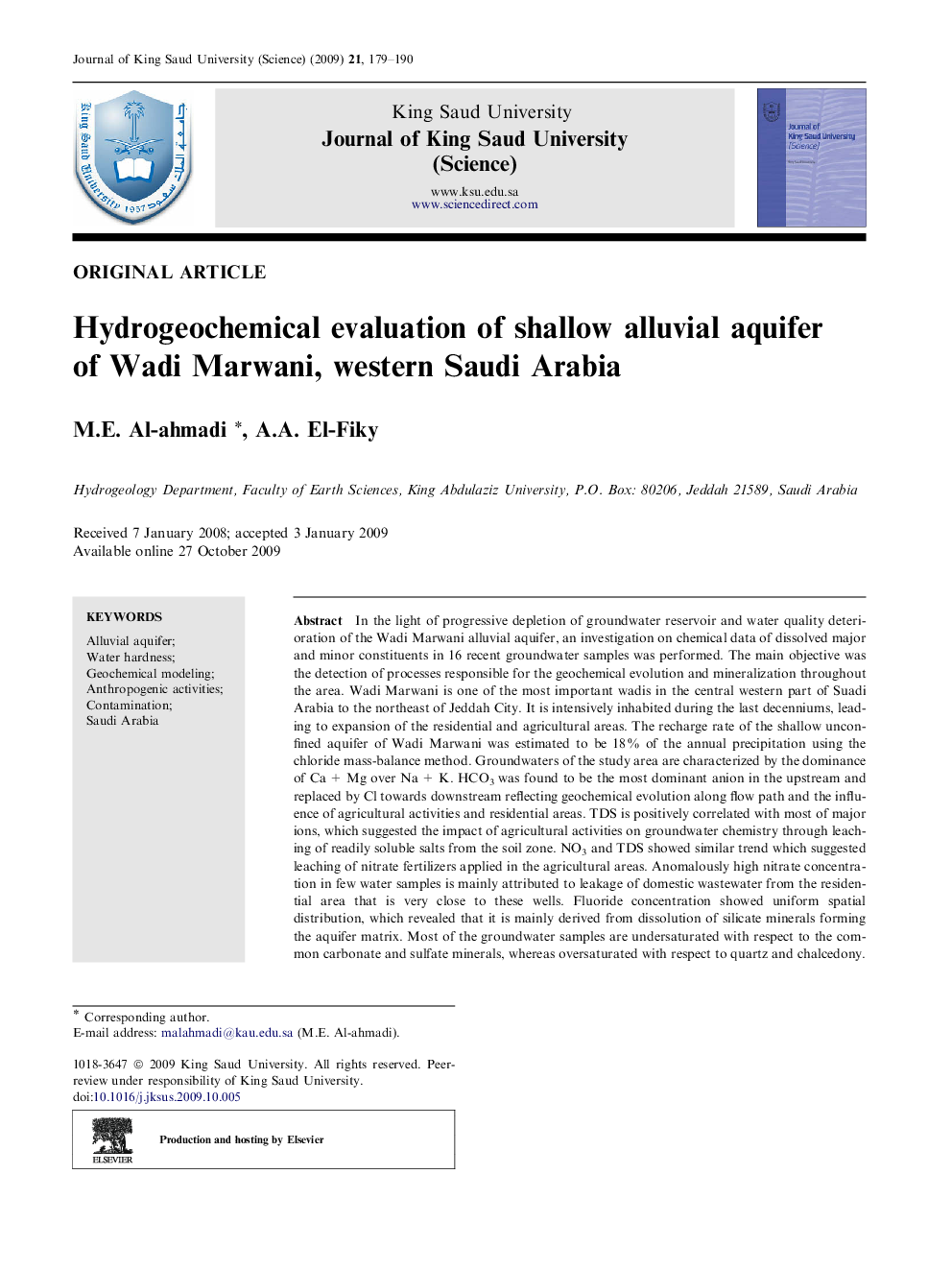| کد مقاله | کد نشریه | سال انتشار | مقاله انگلیسی | نسخه تمام متن |
|---|---|---|---|---|
| 827545 | 908010 | 2009 | 12 صفحه PDF | دانلود رایگان |

In the light of progressive depletion of groundwater reservoir and water quality deterioration of the Wadi Marwani alluvial aquifer, an investigation on chemical data of dissolved major and minor constituents in 16 recent groundwater samples was performed. The main objective was the detection of processes responsible for the geochemical evolution and mineralization throughout the area. Wadi Marwani is one of the most important wadis in the central western part of Suadi Arabia to the northeast of Jeddah City. It is intensively inhabited during the last decenniums, leading to expansion of the residential and agricultural areas. The recharge rate of the shallow unconfined aquifer of Wadi Marwani was estimated to be 18% of the annual precipitation using the chloride mass-balance method. Groundwaters of the study area are characterized by the dominance of Ca + Mg over Na + K. HCO3 was found to be the most dominant anion in the upstream and replaced by Cl towards downstream reflecting geochemical evolution along flow path and the influence of agricultural activities and residential areas. TDS is positively correlated with most of major ions, which suggested the impact of agricultural activities on groundwater chemistry through leaching of readily soluble salts from the soil zone. NO3 and TDS showed similar trend which suggested leaching of nitrate fertilizers applied in the agricultural areas. Anomalously high nitrate concentration in few water samples is mainly attributed to leakage of domestic wastewater from the residential area that is very close to these wells. Fluoride concentration showed uniform spatial distribution, which revealed that it is mainly derived from dissolution of silicate minerals forming the aquifer matrix. Most of the groundwater samples are undersaturated with respect to the common carbonate and sulfate minerals, whereas oversaturated with respect to quartz and chalcedony. Groundwater quality assessment revealed that the groundwater can be safely used for drinking. However, further microbiological examination should be carried out where signs of sewage contamination were detected.
Journal: Journal of King Saud University - Science - Volume 21, Issue 3, October 2009, Pages 179–190